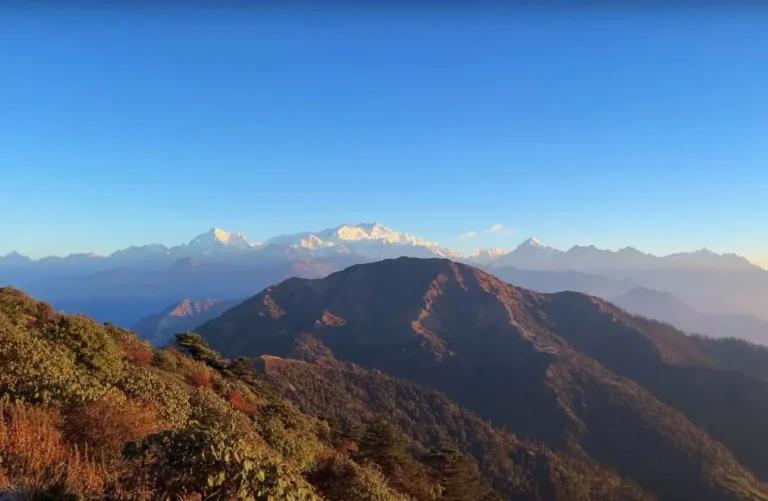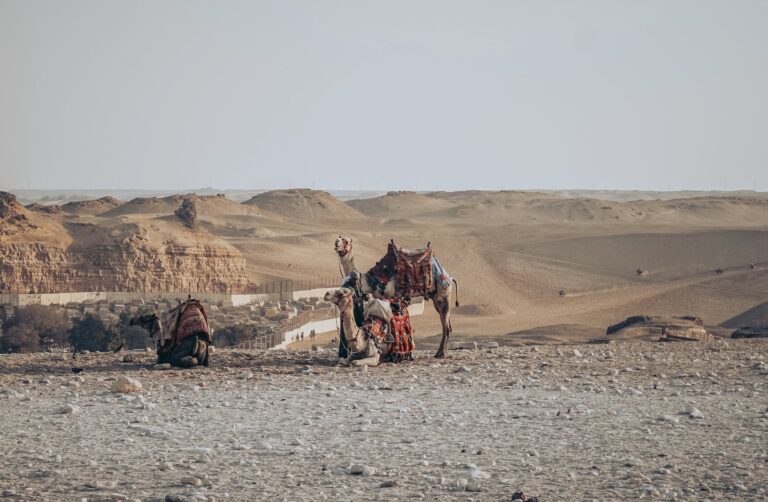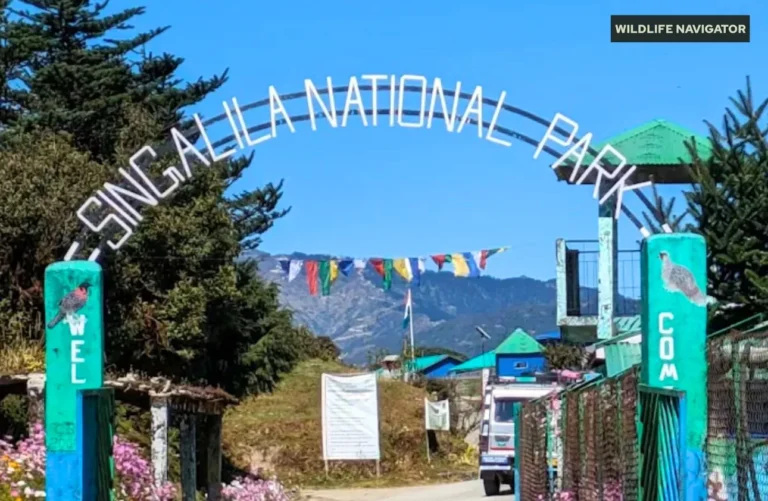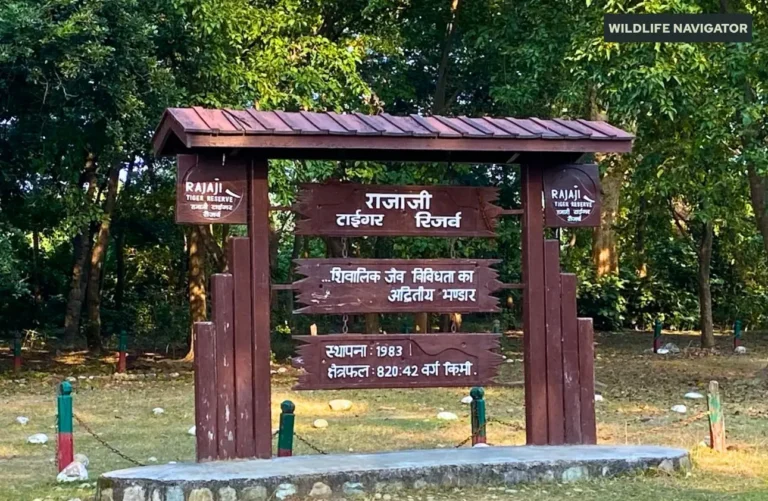Explore 54 Tiger Reserves in India, Across 18 States
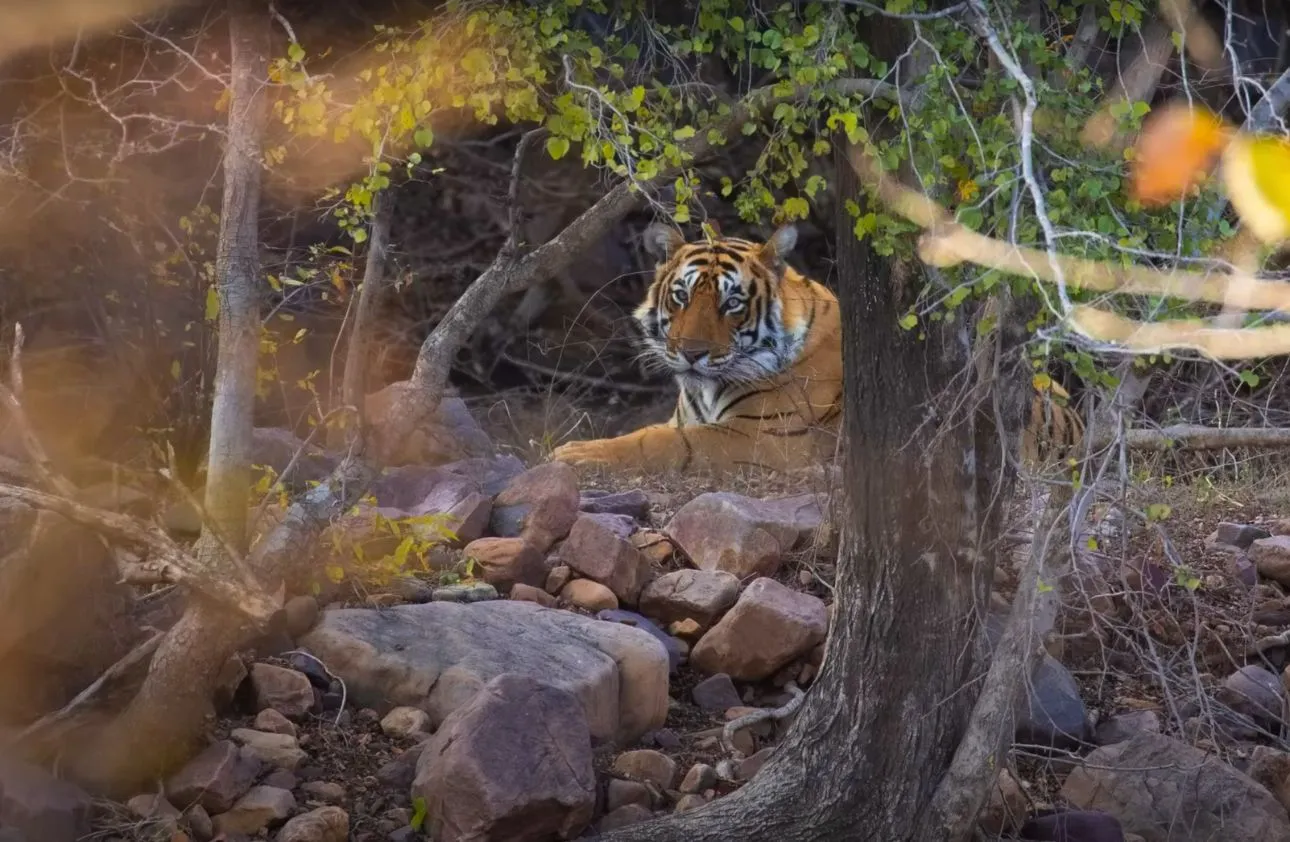
A tiger reserve in India is more than just a protected forest — it is a sanctuary for one of the most majestic animals on Earth, the Bengal tiger, and a living example of India’s dedication to wildlife conservation. With over 75% of the global wild tiger population, India is the ultimate stronghold of tigers and home to a vast network of 54 officially recognized tiger reserves spread across 18 states.
These tiger reserves are not just about tigers. They safeguard entire ecosystems, from lush grasslands and dense deciduous forests to wetlands, mangroves, and high-altitude Himalayan landscapes. Alongside the tiger, visitors may encounter leopards, elephants, wild dogs (dholes), sloth bears, swamp deer, crocodiles, and hundreds of bird species. For travellers and wildlife enthusiasts, tiger reserves are windows into India’s natural soul — where the thrill of spotting a tiger in the wild is matched only by the serenity of untouched forests.
The importance of tiger reserves in India is twofold:
- Conservation – They prevent the extinction of tigers, stabilise prey populations, and protect forests that act as natural carbon sinks.
- Tourism and Awareness – They inspire millions of visitors each year, boosting eco-tourism and generating livelihood opportunities for local communities.
The story of tiger reserves in India began in 1973 with Project Tiger, a pioneering conservation effort, when only nine reserves were created. Today, the network covers over 75,000 sq km, making it one of the world’s largest conservation landscapes. Each reserve has a core zone (strictly protected for wildlife) and a buffer zone (where sustainable human activities are allowed). This balance ensures both the survival of wildlife and coexistence with local communities.
From the legendary Jim Corbett Tiger Reserve in Uttarakhand, India’s first and most famous reserve, to the Sundarbans in West Bengal, where swamp-adapted tigers swim through mangrove creeks, the diversity of tiger reserves is breathtaking. Ranthambore in Rajasthan offers a unique blend of wildlife and history, while Kanha in Madhya Pradesh inspired Rudyard Kipling’s The Jungle Book. Each reserve has its own story, landscape, and adventure to offer.
In recent years, India has witnessed remarkable success in increasing its tiger population, making these reserves not only places of protection but also symbols of hope in global conservation. For travellers, they are more than just tourist destinations — they are journeys into the heart of wild India.
Whether you’re a wildlife photographer seeking the perfect shot, a family on an educational trip, or a solo traveller craving adventure, visiting a tiger reserve in India is an experience like no other. It’s about listening to the jungle, spotting pugmarks on dusty trails, hearing alarm calls from deer, and maybe — just maybe — catching the unforgettable sight of a tiger emerging from the wilderness.
History and Conservation of Tiger Reserves in India
The history of tiger reserves in India is closely tied to the launch of Project Tiger in 1973, a landmark initiative that changed the future of tiger conservation. During the early 20th century, India had nearly 40,000 wild tigers, but by the 1970s, unchecked hunting, poaching, and rapid deforestation had reduced the population to less than 2,000. Alarmed by this drastic decline, the Government of India, with support from the World Wildlife Fund (WWF), created nine tiger reserves across the country, including Jim Corbett, Kanha, Manas, and Sundarbans.
Over the decades, Project Tiger expanded its reach, and today there are 54 tiger reserves in India, covering over 75,000 square kilometres. These reserves follow a unique management system with a core zone (inviolate area where wildlife thrives) and a buffer zone (where eco-friendly human activities are allowed). This approach not only ensures the survival of tigers but also promotes coexistence with local communities.
The conservation success stories of India’s tiger reserves are widely celebrated. For example, Panna Tiger Reserve in Madhya Pradesh lost all its tigers to poaching by 2009, but through a scientific reintroduction program, it once again flourishes with a stable tiger population. Similarly, Sariska Tiger Reserve in Rajasthan became a symbol of hope after tigers were successfully relocated there from Ranthambore.
The establishment of the National Tiger Conservation Authority (NTCA) in 2006 further strengthened policies, monitoring, and funding for reserves. Today, modern tools like camera trapping, satellite mapping, and electronic surveillance help track and protect tigers more effectively.
Conservation of tiger reserves in India is not only about saving one species — it safeguards entire ecosystems. Healthy tiger habitats protect water sources, regulate climate, and support biodiversity. The rising tiger population, recorded in India’s 2022 census at 3,167 individuals, proves that consistent efforts, community participation, and strict protection can make a real difference.
Complete State-Wise List of Tiger Reserves in India
India’s 54 tiger reserves are spread across 18 states, each offering a unique mix of landscapes, wildlife, and cultural experiences. Below is a state-wise guide with key details, including the year of establishment, core area, and unique features.
Tiger Reserves in Uttarakhand
Uttarakhand, located in the Himalayan foothills, is home to two famous tiger reserves. Known for their scenic beauty and rich biodiversity, these reserves also attract thousands of tourists every year.
| Tiger Reserve | Year Established | Core Area (sq km) | Unique Feature |
|---|---|---|---|
| Jim Corbett | 1973 | 520 | First tiger reserve in India; famous for Dhikala zone |
| Rajaji | 2015 | 820 | Rich in elephants; close to Rishikesh and Haridwar |
Tiger Reserves in Uttar Pradesh
Uttar Pradesh lies in the Terai belt along the Nepal border, making it a prime tiger corridor. The state hosts three tiger reserves that protect both tigers and unique species like swamp deer.
| Tiger Reserve | Year Established | Core Area (sq km) | Unique Feature |
|---|---|---|---|
| Dudhwa | 1988 | 1,284 | Famous for swamp deer and rhinos |
| Pilibhit | 2014 | 730 | Known as the “Land of Roaring Tigers” |
| Amangarh | 2012 | 578 | Part of the Corbett landscape; buffer for Uttarakhand’s tigers |
Tiger Reserves in Rajasthan
Rajasthan offers a dramatic landscape of dry forests, hills, and forts where tigers roam. The state’s reserves are popular among tourists, especially wildlife photographers and history lovers.
| Tiger Reserve | Year Established | Core Area (sq km) | Unique Feature |
|---|---|---|---|
| Ranthambore | 1973 | 392 | Tigers often seen around Ranthambore Fort |
| Sariska | 1978 | 881 | Famous for tiger relocation success story |
| Mukundra Hills | 2013 | 759 | Scenic Aravalli landscape; relatively less crowded |
Tiger Reserves in Madhya Pradesh
Known as the “Tiger State of India”, Madhya Pradesh has the highest number of tiger reserves in the country. With six reserves, it offers a mix of dense forests, grasslands, and river valleys. Many of these reserves are world-famous for high tiger density and eco-tourism experiences.
| Tiger Reserve | Year Established | Core Area (sq km) | Unique Feature |
|---|---|---|---|
| Kanha | 1973 | 940 | Inspiration for The Jungle Book; barasingha population |
| Bandhavgarh | 1993 | 716 | Highest tiger density in India |
| Pench (MP) | 1992 | 758 | Rich deciduous forests; shared with Maharashtra |
| Satpura | 2000 | 524 | Only reserve with walking safaris |
| Sanjay-Dubri | 2008 | 831 | Known for Sal forests and leopard sightings |
| Panna | 1994 | 576 | Famous for successful tiger reintroduction |
Tiger Reserves in Maharashtra
Maharashtra has six tiger reserves, many located in the Vidarbha region. These reserves are well-known for consistent tiger sightings and are popular among wildlife photographers.
| Tiger Reserve | Year Established | Core Area (sq km) | Unique Feature |
|---|---|---|---|
| Tadoba-Andhari | 1993 | 625 | One of the best reserves to spot wild tigers |
| Pench (Maha) | 1999 | 257 | Continuation of Pench forests in MP |
| Melghat | 1974 | 1,500 | First tiger reserve of Maharashtra |
| Nawegaon-Nagzira | 2012 | 653 | Famous for lakes and birdlife |
| Bor | 2014 | 138 | Smallest tiger reserve in India |
| Sahyadri | 2010 | 317 | Located in the Western Ghats; unique biodiversity |
Tiger Reserves in Chhattisgarh
Chhattisgarh’s tiger reserves are less commercialized, offering a more raw and untouched jungle experience. They are also crucial habitats for endangered species like the wild buffalo.
| Tiger Reserve | Year Established | Core Area (sq km) | Unique Feature |
|---|---|---|---|
| Indravati | 1982 | 1,258 | Known for endangered wild buffalo |
| Achanakmar | 2009 | 914 | Rich Sal and bamboo forests |
| Udanti-Sitanadi | 2009 | 851 | Focused on wild buffalo conservation |
Tiger Reserves in Odisha
Odisha is home to two tiger reserves that protect the unique biodiversity of the Eastern Ghats and coastal plains. These reserves are also important habitats for elephants, leopards, and rare bird species.
| Tiger Reserve | Year Established | Core Area (sq km) | Unique Feature |
|---|---|---|---|
| Similipal | 1973 | 845 | Known for royal Bengal tigers, waterfalls, and tribal culture |
| Satkosia | 2007 | 964 | Scenic gorge of the Mahanadi River; habitat for gharials and mugger crocodiles |
Tiger Reserves in Andhra Pradesh
Andhra Pradesh shares one of India’s largest tiger landscapes with Telangana. Its tiger reserve lies across the Nallamala Hills, famous for rocky terrain, deep valleys, and large carnivore populations.
| Tiger Reserve | Year Established | Core Area (sq km) | Unique Feature |
|---|---|---|---|
| Nagarjunsagar-Srisailam | 1983 | 3,296 | Largest tiger reserve in India; spread across five districts |
Tiger Reserves in Telangana
Telangana has three tiger reserves, including the continuation of Nagarjunsagar-Srisailam from Andhra Pradesh. These reserves are crucial for tiger conservation in the Deccan Plateau region.
| Tiger Reserve | Year Established | Core Area (sq km) | Unique Feature |
|---|---|---|---|
| Nagarjunsagar-Srisailam (Telangana part) | 1983 | Part of 3,296 | Shares boundary with Andhra; rich in rocky cliffs and Nallamala forests |
| Amrabad | 2014 | 2,800 | One of the largest reserves in South India; habitat for sloth bears and wild dogs |
| Kawal | 2012 | 893 | Declared as tiger reserve to serve as a corridor between Tadoba and Indravati |
Tiger Reserve in Goa
Goa has recently declared its first tiger reserve in the Western Ghats. It plays a vital role in maintaining corridors for tigers and other wildlife across Karnataka and Maharashtra.
| Tiger Reserve | Year Established | Core Area (sq km) | Unique Feature |
|---|---|---|---|
| Mhadei | 2023 | 208 | Goa’s first tiger reserve; protects Western Ghats biodiversity |
Tiger Reserve in Andaman & Nicobar Islands
The Andaman & Nicobar Islands host one tiger reserve, unique due to its island ecosystem. Though tiger presence is rare, it is a biodiversity hotspot with marine-terrestrial ecosystems.
| Tiger Reserve | Year Established | Core Area (sq km) | Unique Feature |
|---|---|---|---|
| Only island tiger reserve, rich in coral reefs, mangroves, and tropical forests | 2008 | 114 | Only island tiger reserve; rich in coral reefs, mangroves, and tropical forests |
Tiger Reserves in Jharkhand
Jharkhand has just one tiger reserve, but it is one of the original nine reserves established under Project Tiger in 1973. Despite challenges like poaching and habitat pressure, it continues to be an important habitat for tigers and other wildlife.
| Tiger Reserve | Year Established | Core Area (sq km) | Unique Feature |
|---|---|---|---|
| Palamau | 1973 | 1,014 | Among the first nine reserves of Project Tiger; famous for diverse flora and fauna |
Tiger Reserves in Bihar
Bihar is home to just one tiger reserve, but it is extremely significant as it protects the foothills of the Himalayas and the Gandak River floodplains, making it a rich ecosystem for both tigers and migratory birds.
| Tiger Reserve | Year Established | Core Area (sq km) | Unique Feature |
|---|---|---|---|
| Valmiki | 1990 | 598 | Only tiger reserve in Bihar; borders Nepal and Chitwan National Park |
Tiger Reserves in West Bengal
West Bengal has two tiger reserves, both of which are internationally famous. The Sundarbans is home to the only swamp-adapted tigers in the world, while Buxa serves as an important corridor for elephant and tiger movement between India and Bhutan.
| Tiger Reserve | Year Established | Core Area (sq km) | Unique Feature |
|---|---|---|---|
| Sundarbans | 1973 | 1,330 | World’s only mangrove habitat for tigers; UNESCO World Heritage Site |
| Buxa | 1983 | 390 | Gateway to Bhutan; rich bird diversity and elephant corridors |
Tiger Reserves in Assam
Assam is one of India’s richest states for biodiversity. With its grasslands, wetlands, and forests, it provides excellent tiger habitats. Assam’s four tiger reserves are also home to endangered species like the one-horned rhinoceros, swamp deer, and wild water buffalo.
| Tiger Reserve | Year Established | Core Area (sq km) | Unique Feature |
|---|---|---|---|
| Kaziranga | 2006 | 484 | UNESCO World Heritage Site; famous for one-horned rhinoceros |
| Manas | 1973 | 840 | UNESCO World Heritage Site; also an Elephant Reserve |
| Nameri | 1999 | 200 | Known for birdwatching and river rafting on Jia-Bhoroli |
| Orang | 1999 | 79 | Smallest tiger reserve in Assam; nicknamed “Mini Kaziranga” |
Tiger Reserves in Arunachal Pradesh
Arunachal Pradesh, located in the Eastern Himalayas, is a biodiversity hotspot. Its tiger reserves protect high-altitude forests, hornbills, clouded leopards, and red pandas along with tigers.
| Tiger Reserve | Year Established | Core Area (sq km) | Unique Feature |
|---|---|---|---|
| Namdapha | 1983 | 1,808 | Fourth largest tiger reserve in India; home to all four big cats (tiger, leopard, snow leopard, clouded leopard) |
| Pakke | 2002 | 862 | Famous for hornbill conservation and community eco-tourism |
Tiger Reserves in Mizoram
Mizoram has one tiger reserve, located in the northwestern part of the state. It is covered with tropical forests and bamboo groves, supporting diverse birdlife along with tigers.
| Tiger Reserve | Year Established | Core Area (sq km) | Unique Feature |
|---|---|---|---|
| Dampa | 1994 | 500 | Known for rich bird diversity; remote and less explored |
Tiger Reserves in Nagaland
Nagaland has one of India’s newest tiger reserves. Though small in size, it plays a critical role in protecting the state’s forests and providing safe corridors for tigers in Northeast India.
| Tiger Reserve | Year Established | Core Area (sq km) | Unique Feature |
|---|---|---|---|
| Intanki | 2020 | 202 | Latest addition to India’s tiger reserves; rich in hill forests and tribal eco-culture |
Tiger Reserves in Kerala
Kerala, known for its lush Western Ghats, has two famous tiger reserves. They are home not only to tigers but also to elephants, gaur, and endemic species of the Ghats.
| Tiger Reserve | Year Established | Core Area (sq km) | Unique Feature |
|---|---|---|---|
| Periyar | 1978 | 925 | Famous for Periyar Lake boat safaris and large elephant herds |
| Parambikulam | 2009 | 643 | Part of Anamalai-Parambikulam landscape; excellent eco-tourism facilities |
Tiger Reserves in Karnataka
Karnataka has the highest number of tiger reserves in South India and consistently records the largest tiger population in India. The reserves here cover dry deciduous, moist deciduous, and evergreen forests.
| Tiger Reserve | Year Established | Core Area (sq km) | Unique Feature |
|---|---|---|---|
| Bandipur | 1973 | 912 | Part of Nilgiri Biosphere Reserve; famous for tiger sightings |
| Nagarhole (Rajiv Gandhi) | 1999 | 643 | UNESCO World Heritage Site (as part of Western Ghats) |
| Bhadra Tiger Reserve | 1998 | 492 | First reserve in India to complete voluntary village relocation |
| Kali (formerly Dandeli-Anshi) | 2007 | 1,100 | Known for black panthers and hornbills |
Tiger Reserves in Tamil Nadu
Tamil Nadu has several important reserves that connect with Kerala and Karnataka, forming continuous forest corridors for tigers and elephants.
| Tiger Reserve | Year Established | Core Area (sq km) | Unique Feature |
|---|---|---|---|
| Mudumalai | 2007 | 321 | UNESCO World Heritage Site; shares boundaries with Bandipur & Wayanad |
| Anamalai (Indira Gandhi Wildlife Sanctuary) | 2008 | 958 | Rich in lion-tailed macaques and rare orchids |
| Sathyamangalam | 2013 | 793 | Largest tiger reserve in Tamil Nadu; important elephant corridor |
| Kalakad Mundanthurai (KMTR) | 1988 | 895 | Part of Agasthyamala Biosphere Reserve; unique mix of wet evergreen forests |
Wildlife Experience in Tiger Reserves in India
A visit to a tiger reserve in India is not just about spotting the striped predator — it’s about experiencing the diverse wildlife and landscapes that make these reserves some of the richest ecosystems on Earth. Each reserve shelters a complete web of life, where every species plays a role in maintaining the balance of nature.
The star attraction, of course, is the Bengal tiger. Watching a tiger emerge silently from tall grass, cross a dusty jungle track, or cool off in a waterhole is a moment of pure thrill. But alongside tigers, visitors may also encounter leopards, sloth bears, wild dogs (dholes), jackals, hyenas, and jungle cats. Large herbivores like Indian gaur, sambar deer, spotted deer (chital), nilgai, barasingha, and wild boar dominate the grasslands and riverine areas.
For birdwatchers, tiger reserves are no less than paradise. From the crested serpent eagle and changeable hawk-eagle circling overhead to the vibrant Indian pitta, hornbills, kingfishers, and migratory ducks, these parks host more than 1,500 bird species. Wetland reserves like Sundarbans and Satkosia are also home to crocodiles, gharials, turtles, and river dolphins, adding another layer of diversity.
Every reserve offers a unique wildlife experience. In Kanha and Bandhavgarh, sightings of barasingha and high tiger density make safaris unforgettable. The Sundarbans in West Bengal introduce travellers to swimming tigers and estuarine crocodiles. In the south, Periyar and Bandipur offer a chance to watch elephants, while Nameri in Assam is a haven for bird enthusiasts.
Beyond animals, the charm lies in the landscapes themselves — dense sal forests, rolling meadows, dry deciduous jungles, mangrove swamps, and hilly terrains. Each habitat tells its own story, and exploring it by jeep, boat, or even on foot in reserves like Satpura deepens the connection with nature.
In essence, the wildlife experience in tiger reserves in India is a perfect blend of adventure, education, and conservation awareness, making them must-visit destinations for nature lovers across the globe.
Best Time to Visit Tiger Reserves in India
The best time to visit tiger reserves in India largely depends on what travellers want to experience — from thrilling tiger sightings to pleasant weather for family trips or vibrant birdwatching opportunities. Since most reserves are open from October to June (and remain closed during the monsoon for safety and breeding reasons), each season offers something different.
Winter (November – February)
Winter is one of the most popular seasons to explore tiger reserves. The weather is cool, making safaris comfortable for families and photographers alike. During this time, the forests are lush green after the rains, and visibility is excellent for spotting animals like deer, elephants, and birds. Birdwatchers especially benefit from this season, as migratory species from Central Asia and Europe flock to reserves like Kaziranga, Bharatpur (near Ranthambore), and Periyar. However, tigers are slightly harder to spot in the dense undergrowth during this period.
Summer (March – June)
If tiger sightings are the top priority, then summer is undoubtedly the best time to visit tiger reserves in India. As temperatures rise, animals congregate around rivers, lakes, and artificial waterholes, increasing the chances of spotting tigers, leopards, and sloth bears. Reserves like Bandhavgarh, Ranthambore, Tadoba, and Pench are particularly famous for summer sightings. The heat can be intense, but early morning and late afternoon safaris often provide the most thrilling experiences.
Monsoon (July – September)
The monsoon season transforms the forests into vibrant green landscapes, but most tiger reserves remain closed during this time. This break is essential for habitat regeneration and for allowing wildlife to breed undisturbed. A few exceptions, like Periyar in Kerala and certain buffer zones, may still allow limited tourism, offering a chance to witness the raw beauty of the rain-drenched wilderness.
Safari Experience in Tiger Reserves in India
A safari experience in tiger reserves in India is the ultimate way to explore the wild and witness tigers and other wildlife in their natural habitat. Safaris are carefully managed to ensure visitor safety while minimising disturbance to animals. Depending on the reserve, travellers can choose from jeep safaris, canter safaris, boat safaris, and even walking safaris.
Jeep Safaris
Jeep safaris are the most common and popular option across India’s tiger reserves. Conducted in open 4×4 vehicles, they allow visitors to traverse forest roads and explore core zones where tigers are most active. Early morning and late afternoon safaris are the best for tiger sightings, as these are the periods when animals come out to hunt or drink water. Famous reserves like Ranthambore, Bandhavgarh, Kanha, and Jim Corbett are known for jeep safaris that provide excellent wildlife spotting opportunities.
Canter Safaris
For larger groups or families, canter safaris — large buses with open sides — are offered in reserves like Bandhavgarh and Pench. Canters allow more people to experience the forest together and are especially suitable for tourists who prefer guided tours with naturalists explaining the flora and fauna.
Boat Safaris
Some tiger reserves, particularly in wetland and mangrove areas, offer boat safaris. The Sundarbans in West Bengal and Periyar in Kerala are famous for these. Navigating rivers and lakes, visitors can spot tigers swimming, crocodiles sunbathing, and a variety of waterbirds, making boat safaris a unique wildlife experience.
Walking Safaris
Walking safaris are conducted in select reserves like Satpura in Madhya Pradesh, where guides lead small groups through dense forests. While not as common as jeep safaris, walking safaris provide an intimate experience of the forest, its sounds, tracks, and smaller wildlife. These safaris are ideal for photographers, birdwatchers, and adventure enthusiasts.
Conservation Challenges
While tiger reserves in India have achieved remarkable success in increasing tiger populations, they continue to face significant conservation challenges. Poaching remains a major threat, targeting tigers for their skins and body parts used in illegal trade. Habitat loss due to deforestation, infrastructure development, and agriculture reduces the space available for tigers and their prey.
Human-wildlife conflict is another concern, especially in buffer zones where tigers or elephants may venture into nearby villages, sometimes causing damage to crops or livestock. Climate change and erratic weather patterns also affect forest ecosystems, water availability, and prey populations, indirectly impacting tiger survival.
Managing tourism sustainably is another challenge. Unregulated visitor traffic can disturb wildlife, degrade habitats, and increase pollution in sensitive areas.
Addressing these challenges requires strict anti-poaching measures, habitat restoration, community involvement, and scientific monitoring, ensuring that India’s tiger reserves continue to thrive while supporting both wildlife and local communities.
Travel Tips and Eco-Tourism in Tiger Reserves in India
Visiting a tiger reserve in India is an unforgettable experience, but it requires careful planning and responsible behaviour to ensure both safety and the conservation of wildlife. Here are some essential travel tips:
- Book Safaris in Advance – Most reserves require online booking for jeep or canter safaris. Early morning and late afternoon slots provide the best chances for tiger sightings.
- Choose the Right Clothing – Wear neutral or earth-toned clothing to blend with the environment. Avoid bright colours that may startle animals.
- Carry Essentials – Binoculars, cameras, hats, water bottles, and insect repellent are recommended. Remember to carry minimal luggage in safari vehicles.
- Follow Rules Strictly – Stay inside the vehicle, maintain silence, avoid feeding animals, and respect buffer zones to minimise disturbance.
- Travel Light and Eco-Friendly – Carry reusable bottles, avoid plastic, and dispose of waste responsibly.
Beyond individual travel tips, many tiger reserves actively promote eco-tourism, which benefits both wildlife and local communities. Eco-tourism initiatives include guided safaris, nature walks, and homestays managed by tribal or local populations. By staying in these eco-friendly accommodations or purchasing local handicrafts, visitors contribute directly to the livelihoods of communities living near the reserves.
Reserves like Kanha, Periyar, Pench, and Parambikulam have successfully integrated eco-tourism with conservation, offering tourists a chance to learn about the forest ecosystem, local traditions, and wildlife protection efforts. This approach also reduces human-wildlife conflict, as communities gain incentives to protect rather than exploit forests.
How to Reach Tiger Reserves in India
A tiger reserve in India can be accessed through multiple modes of transportation, depending on its location. Most reserves are well connected by air, rail, and road, making them accessible for both domestic and international travellers.
- By Air: Several tiger reserves are close to major airports. For example, Jim Corbett and Rajaji are best reached via Pantnagar Airport, while Ranthambore is near Jaipur Airport. Madhya Pradesh’s Bandhavgarh, Kanha, and Pench are serviced by Jabalpur, Nagpur, and Raipur airports, respectively. Southern reserves like Periyar and Bandipur can be accessed via Cochin, Coimbatore, or Bangalore airports. Air travel is ideal for those planning short visits or travelling from far-off cities.
- By Train: Railways are an economical and convenient option. Sawai Madhopur (Ranthambore), Ramnagar (Corbett), and Umaria (Bandhavgarh) are well-connected to major cities like Delhi, Mumbai, and Kolkata. Trains are especially suitable for travellers who want to combine a wildlife trip with a broader exploration of the region.
- By Road: Road travel allows flexibility and the chance to enjoy scenic drives through forests and rural landscapes. Most reserves are connected by highways, and taxis or buses can be hired from nearby towns or cities. For example, Pench, Tadoba, and Pench (Maharashtra side) are accessible via Nagpur by road.
Conclusion
A tiger reserve in India is more than just a protected area; it is a living testament to the country’s commitment to wildlife conservation. With 54 tiger reserves spread across 18 states, India offers unparalleled opportunities to witness the Bengal tiger in its natural habitat while exploring some of the most diverse and fragile ecosystems on Earth. From the Himalayan foothills of Jim Corbett to the mangroves of the Sundarbans, the dry forests of Ranthambore, and the lush Western Ghats of Periyar, each reserve offers a unique blend of adventure, education, and natural beauty.
Visiting tiger reserves is not just about spotting tigers. It is about understanding the delicate balance of nature, appreciating the rich biodiversity, and supporting conservation efforts that benefit both wildlife and local communities. By following safari rules, respecting buffer zones, participating in eco-tourism, and practising responsible travel, visitors become active participants in preserving these forests for generations to come.
The success of India’s tiger conservation — evidenced by the rising tiger population and thriving reserves — demonstrates that dedicated protection, scientific management, and community engagement can produce real results. Each trip to a tiger reserve is a chance to experience the thrill of wildlife, witness rare species, and gain a deeper appreciation for the natural world.
In conclusion, exploring a tiger reserve in India is not only a remarkable adventure but also a meaningful journey into conservation, sustainability, and the heart of India’s wilderness. For wildlife enthusiasts, photographers, researchers, and travellers alike, these reserves are destinations that promise unforgettable memories while contributing to the protection of one of the world’s most iconic species.
